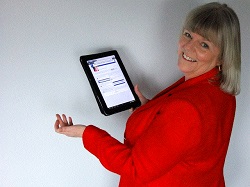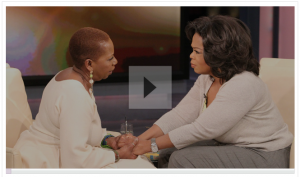6 Coaching Opportunities To Uplevel Your Coaching Skills Thanks To Neuroscience
In this weeks guest post Amy Brann shares some of her expertise on the subject of Neuroscience and coaching

6 Coaching Opportunities To Uplevel Your Coaching Skills Thanks To Neuroscience
By Amy Brann
From the perspective of Coaches, neuroscience is the field that can inform them of important things about the brain. Things that are key to new ways that you work with clients and also things that underpin things you are already familiar with. Neuroscience can explain why and how Coaching works. It can enlighten Coaches as to things to pay particular attention to. It can warn against other practices.
We believe an understanding of neuroscience will become expected to underpin everything that sits on top of it. Neuroscience is not claiming to be better than anything a Coach currently does or to replace it. Rather we suggest it will enhance your understanding of those you work with.
What can neuroscience offer the Coaching World?
- An understanding of what happens when a person is being Coached,
- Ways to create the best Coaching environment for clients,
- For Coaches who use particular models, an understanding of how they might work or an opportunity to stop using outdated concepts,
- A foundational understanding of the brain through which to evaluate everything,
- The opportunity to ask better quality questions and consider what interventions would best serve your client,
- A focus on important considerations for how to get desired action occurring, e.g. mental stress leads to habit behaviour rather than goal-directed behaviour so this informs how / when.
How does neuroscience relate to other disciplines?
We can think of neuroscience as a friend to other disciplines, such as psychology. Often in academic circles there is cross over and collaboration. In my team we have neuroscientists, psychologists, behaviour analysts and several other experts. In the spirit of full disclosure I’ll share that sometimes we generate a little heat between the neuroscientists and the behaviour guys. Ultimately though we all realise that we can each learn from one another and stimulate deeper research and insights.
When can I use neuroscience with a client?
There are a huge number of opportunities within a normal Coaching engagement to use neuroscience to guide us. Here are just a few, many of which take on new depth and significance when you understand the neuroscience (remembering some words have slightly different psychological or neuroscientific meaning to in normal Coaching usage, e.g. reward):
| Coaching Opportunity | Example of Areas / studies in Neuroscience | Example of applications |
| Connecting with client | Trust and fairness and oxytocin | Actively finding ways to build trust with your client and demonstrate your fairness |
| Goal setting | Decision making, visualisation, willpower | Citing a visualisation study to help a client see the potential value |
| Examining their environment | Nudging and priming | Explore your client’s normal environment and where they are when they need to do behaviours leading to goal attainment |
| Behavioural evaluation | Hot & Cold network | Your client’s behaviour is key to their results and is influenced by many factors. |
| Rewards | Dopamine | Helping your client understand what is currently activating their reward circuitry can be empowering and important in making changes |
| Habits analysis | Hebbs Law, Basal Ganglia | Being clear on how new habits are formed |
From the perspective of the Coach it makes sense to immerse oneself in all areas of study that can help us understand better how people’s minds and brains work.
About Amy Brann
If you’ve enjoyed this article, I invite you to visit Amy’s website, and become a member of her free and insightful Neuroscience for Coaches community, so that you can further experience the impact of applying neuroscience insights on your life and career! Understanding how the brain works gives you a competitive advantage over Coaches who do not. As a welcome gift, you will receive a special complimentary resources bundles that includes the 1st chapter of ‘Neuroscience for Coaches’, your Neuroscience for Coaches checklist, and your Neuroscience for Coaches Insights ebook.
Twitter: https://twitter.com/Amy_Brann
LinkedIn: https://www.linkedin.com/in/amybrann



 Amanda Clegg has been a science teacher in state secondary schools for almost thirty years. She was a member of a Senior Leadership team for 15 years before being asked to lead a private sixth form college through their initial ISI inspection. The college achieved an outstanding judgement. Amanda now works as an Educational and Coaching Consultant in Oxfordshire and Swindon. She is currently acting as temporary Head of Science two days a week in a local secondary school, as well as being an Associate trainer for Creative Education, co-author of a GCSE revision guide and an Associate Lecturer for UWE on the PGCE programme.
Amanda Clegg has been a science teacher in state secondary schools for almost thirty years. She was a member of a Senior Leadership team for 15 years before being asked to lead a private sixth form college through their initial ISI inspection. The college achieved an outstanding judgement. Amanda now works as an Educational and Coaching Consultant in Oxfordshire and Swindon. She is currently acting as temporary Head of Science two days a week in a local secondary school, as well as being an Associate trainer for Creative Education, co-author of a GCSE revision guide and an Associate Lecturer for UWE on the PGCE programme.


 With a career including 15 years in the strategic PR and communications, Jennifer knows a thing or two about promoting a personal brand – she did it every time she picked up the phone to a journalist. The result? She stood out from the ‘press office crowd’ and got her stories on the front page as well as national TV.
With a career including 15 years in the strategic PR and communications, Jennifer knows a thing or two about promoting a personal brand – she did it every time she picked up the phone to a journalist. The result? She stood out from the ‘press office crowd’ and got her stories on the front page as well as national TV.